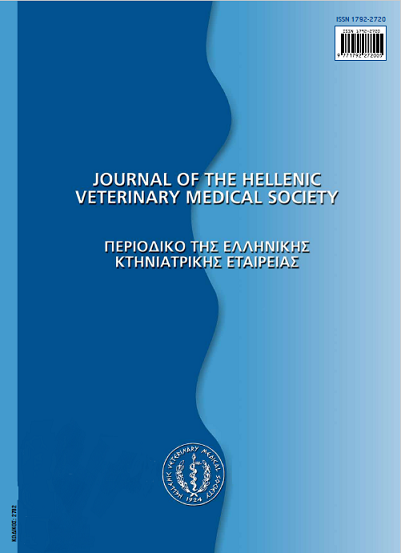Απόπτωση στο κεντρικό νευρικό σύστημα των θηλαστικών κατά την ανάπτυξη και σε παθολογικές καταστάσεις

Περίληψη
Η ανάπτυξη του κεντρικού νευρικού συστήματος (ΚΝΣ) περιλαμβάνει γενετικά ελεγχόμενες, ανταγωνιστικέςδιεργασίες, όπως είναι, αφενός, ο πολλαπλασιασμός, η μετανάστευση και η διαφοροποίηση των νευρικών κυττάρων, αφετέρου,ο κυτταρικός θάνατος. Ο κυτταρικός θάνατος, που παρατηρείται κατά τη φυσιολογική ανάπτυξη σε όλες τις περιοχές του ΚΝΣ,ορίζεται ως «προγραμματισμένος κυτταρικός θάνατος» (Programmed Cell Death, PCD). Η απόπτωση είναι ένας μορφολογικόςτύπος PCD, ο οποίος θεωρείται ως η θεμελιώδης διεργασία της ανάπτυξης και παίξει σημαντικό ρόλο στη ρύθμιση του τελικούαριθμού των κυττάρων και στην εδραίωση των νευρωνικών δικτύων του ΚΝΣ. Κατά την εμβρυογένεση, η απόπτωση παρατηρείταισε πολλαπλασιαζόμενους κυτταρικούς πληθυσμούς και συμμετέχει στη μορφογένεση του ΚΝΣ. Σε μεταγενέστερααναπτυξιακά στάδια, η απόπτωση εμφανίζεται σε μεταμιτωτικούς νευρώνες που ανταγωνίζονται μεταξύ τους για τη δέσμευση νευροτροφικών παραγόντων, οι οποίοι βρίσκονται σε περιορισμένη διαθεσιμότητα. Οι παράγοντες αυτοί καταστέλλουν τον ενδογενήμηχανισμό γενετικού ελέγχου του κυτταρικού θανάτου. Σύμφωνα με τη νευροτροφική θεωρία, οι νευρώνες που προσλαμβάνουνεπαρκείς ποσότητες νευροτροφικών παραγόντων επιβιώνουν, ενώ οι υπόλοιποι απομακρύνονται μέσω του PCD. Οι πληροφορίεςγια το χρονικό πρότυπο που ακολουθεί το φαινόμενο της απόπτωσης στο αναπτυσσόμενο ΚΝΣ προέρχονται από μελέτες σετρωκτικά και κουνέλια, καθώς δεν υπάρχουν βιβλιογραφικά δεδομένα για κατοικίδια θηλαστικά. Στα πειραματόζωα αυτά αναφέρεταιότι η απόπτωση ακολουθεί ένα μονοφασικό ή διφασικό χρονικό πρότυπο και ολοκληρώνεται κατά την πρώιμη, κρίσιμηπερίοδο της ανάπτυξης του ΚΝΣ, η οποία χαρακτηρίζεται από τη μορφολογική και λειτουργική ωρίμανση των νευρώνων και τοσχηματισμό συνάψεων. Υπάρχουν ισχυρές ενδείξεις ότι εκτός από το ρόλο της στην ανάπτυξη, η απόπτωση σχετίζεται και μετην απώλεια κυττάρων που παρατηρείται σε νευροεκφυλιστικές νόσους και τραυματικές βλάβες του ΚΝΣ στον άνθρωπο καιστα ζώα. Ποίκιλες μελέτες καταδεικνύουν ότι η εκφύλιση νευρώνων σε εγκεφάλους σαρκοφάγων με νόσο τύπου Alzheimer, αβιοτροφια της παρεγκεφαλίδας και εστιακή ή γενικευμένη εγκεφαλική ισχαιμία οφείλεται σε κυτταρικό θάνατο αποπτωτικούτύπου. Επιπλέον, αποπτωτικοι δείκτες έχουν ανιχνευθεί σε εγκεφάλους σαρκοφάγων και μηρυκαστικών με εγκεφαλοπάθειεςπου οφείλονται σε ιούς ή πρίον πρωτεΐνες. Η χρήση πειραματόζωων-μοντέλων έχει αποδειχθεί πολύτιμο εργαλείο για τη διερεύνησητων μηχανισμών που είναι υπεύθυνοι για την απώλεια κυττάρων σε νευρικές παθήσεις. Από τις μελέτες αυτές προκύπτειότι πειραματικές βλάβες σε συνδέσεις μεταξύ περιοχών του ΚΝΣ, με επακόλουθη αποστέρηση των νευρώνων από νευροτροφικούς παράγοντες, έχουν ως αποτέλεσμα την αύξηση της απόπτωσης, η οποία εξαρτάται σε μεγάλο βαθμό από την ηλικία που γίνονταιοι βλάβες. Επιπλέον, η απόκριση των νευρώνων σε αποπτωτικά ερεθίσματα εμφανίζει ετερογένεια, η οποία σχετίζεται μετην περιοχή στην οποία απαντούν οι νευρώνες και το είδος των συνδέσεων που καταστρέφονται. Σύμφωνα με επιδημιολογικές μελέτες,οι νόσοι του ΚΝΣ αποτελούν παγκοσμίως μείζον πρόβλημα για την υγεία των ζώων και του ανθρώπου με σοβαρές κοινωνικοοικονομικέςεπιπτώσεις. Κεντρικό στόχο των νευροεπιστημόνων αποτελεί η ανάπτυξη θεραπευτικών προσεγγίσεων γιατην αποκατάσταση βλαβών του ΚΝΣ. Ανάμεσα στις σύγχρονες θεραπευτικές στρατηγικές, οι οποίες βρίσκονται υπό πειραματικήκαι κλινική δοκιμή, περιλαμβάνεται η υποκατάσταση των νευροτροφικών παραγόντων και η μεταμόσχευση στελεχιαιων κυττάρων.Η έρευνα των αρχών και των μηχανισμών που διέπουν την απώλεια κυττάρων σε νευροεκφυλιστικές νόσους και τραυματικέςβλάβες του ΚΝΣ χαρακτηρίζεται διεθνώς ως τομέας υψηλής προτεραιότητας και εκφράζονται ελπίδες από την επιστημονικήκοινότητα ότι θα οδηγήσει στην ανάπτυξη νέων θεραπευτικών μέσων με θετικά αποτελέσματα. Σκοπός της παρούσας ανασκόπησηςείναι η σύνοψη των πιο πρόσφατων ερευνητικών δεδομένων που προκύπτουν από τις μελέτες των μοριακών μηχανισμώντης απόπτωσης των νευρώνων και των παραγόντων που τη ρυθμίζουν κατά την ανάπτυξη και σε παθολογικές καταστάσεις, ηπαρουσίαση των κύριων πειραματικών μοντέλων που χρησιμοποιήθηκαν στις μελέτες αυτές, καθώς και η περιγραφή των θεραπευτικώνστρατηγικών που εστιάζουν στην παρεμπόδιση ή στον περιορισμό του αποπτωτικού κυτταρικού θανάτου.
Λεπτομέρειες άρθρου
- Πώς να δημιουργήσετε Αναφορές
-
DORI (Ι. ΔΩΡΗ) I., & ZACHARAKI (Θ. ΖΑΧΑΡΑΚΗ) T. (2018). Απόπτωση στο κεντρικό νευρικό σύστημα των θηλαστικών κατά την ανάπτυξη και σε παθολογικές καταστάσεις. Περιοδικό της Ελληνικής Κτηνιατρικής Εταιρείας, 59(1), 29–39. https://doi.org/10.12681/jhvms.14945
- Τεύχος
- Τόμ. 59 Αρ. 1 (2008)
- Ενότητα
- Review Articles

Αυτή η εργασία είναι αδειοδοτημένη υπό το CC Αναφορά Δημιουργού – Μη Εμπορική Χρήση 4.0.
Οι συγγραφείς των άρθρων που δημοσιεύονται στο περιοδικό διατηρούν τα δικαιώματα πνευματικής ιδιοκτησίας επί των άρθρων τους, δίνοντας στο περιοδικό το δικαίωμα της πρώτης δημοσίευσης.
Άρθρα που δημοσιεύονται στο περιοδικό διατίθενται με άδεια Creative Commons 4.0 Non Commercial και σύμφωνα με την άδεια μπορούν να χρησιμοποιούνται ελεύθερα, με αναφορά στο/στη συγγραφέα και στην πρώτη δημοσίευση για μη κερδοσκοπικούς σκοπούς.
Οι συγγραφείς μπορούν να καταθέσουν το άρθρο σε ιδρυματικό ή άλλο αποθετήριο ή/και να το δημοσιεύσουν σε άλλη έκδοση, με υποχρεωτική την αναφορά πρώτης δημοσίευσης στο J Hellenic Vet Med Soc
Οι συγγραφείς ενθαρρύνονται να καταθέσουν σε αποθετήριο ή να δημοσιεύσουν την εργασία τους στο διαδίκτυο πριν ή κατά τη διαδικασία υποβολής και αξιολόγησής της.


